Galaxy A50 vs. Poco F1 vs. Vivo V15 Pro: Specifications, Features & Prices
Karamchand Rameshwar - Feb 27, 2019
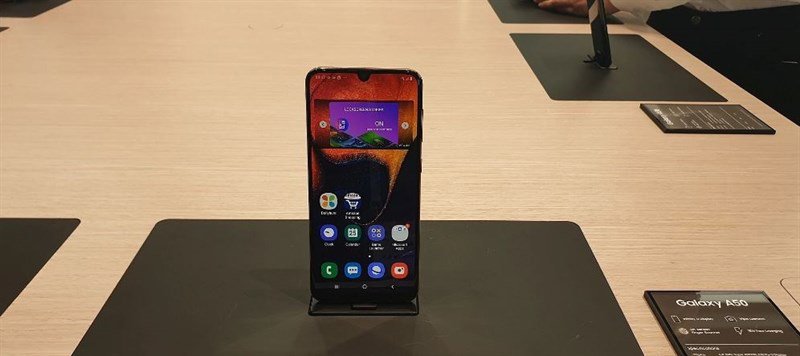
Galaxy A50 and Vivo V15 Pro are two new phones in the mid-range segment. Let's check out our comparison to see if they are on par with the Poco F1.
- Best Gaming Phones 2025: Top Devices for Mobile Gaming
- Vivo T4 Ultra Debuts with MediaTek Dimensity 9300+ Chipset
- Samsung Odyssey 2025 Gaming Monitors Launch in India with Revolutionary Features
Samsung has been quite active in the last month, launching a couple of new budget and mid-range phones to join the competition with the likes of Vivo, Oppo, and Xiaomi. Yesterday, it released the Galaxy A50, which most likely falls on the same segment with the Xiaomi Poco F1 and Vivo V15 Pro. In this comparison, we are going to compare the Galaxy A50 with the Poco F1 and Vivo V15 Pro to see whether the Samsung handset can be a strong contender in the segment.
Galaxy A50 vs. Poco F1 vs. Vivo V15 Pro: Price

Galaxy A50 is the latest addition to the mid-range segment
While the South Korean phone maker didn’t reveal the exact pricing of the Galaxy A50 in the Indian market, the Samsung Netherlands confirmed the phone to come at a price of €349 (around Rs. 28,200). If the same is applied for the Indian market, the A50’s price will be slightly higher than that of the Vivo V15 Pro with 6GB RAM/128GB storage, which is now Rs. 28,999. On the other hand, the Poco F1 still dominates in the price aspect with a starting price of only Rs. 19,999 while the option with 6GB of RAM/128GB of storage that competes directly with Vivo and Samsung handsets are priced at Rs. 22,999. Even the special Armoured Edition of the Poco F1 is only priced at Rs. 23,999.
However, while the Poco F1 has an edge in terms of price, the other two phones come with some interesting features that are not common in their segment.
Galaxy A50 vs. Poco F1 vs. Vivo V15 Pro: Specifications
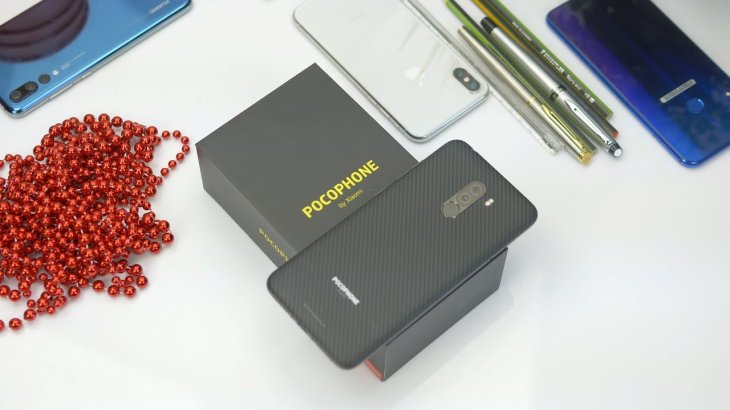
The Poco F1 is pretty much unbeatable in terms of performance in its segment
Considering the performance alone, the Poco F1 is undoubtedly the most powerful of the three thanks to the Snapdragon 845 SoC under the hood. However, not every user utilizes the powerful performance of the Poco F1, some may look for some additional features that the phones can offer. For example, the Galaxy A50 and Vivo V15 Pro both have an on-screen fingerprint sensor that is quickly featuring in the mid-range smartphone segment.
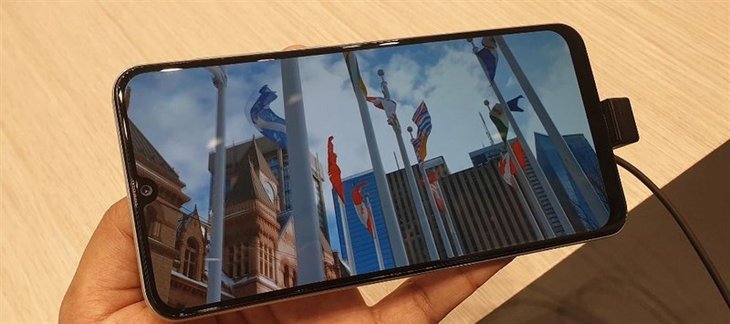
Samsung Galaxy A50
As both of the Samsung and Vivo phones have an on-screen fingerprint scanner, they both sport an AMOLED display, which is better than the LCD panel on the Xiaomi Poco F1. The Vivo V15 Pro sports a 6.39-inch FHD+ Super AMOLED panel with a dewdrop notch on top. Meanwhile, the Galaxy A50 ships with a 6.4-inch Full-HD+ Super AMOLED display with a small dewdrop notch on top. Lastly, the Poco F1 only packs a 6.18-inch Full-HD+ IPS LCD display with a wide notch similar to the one on the iPhone X.

Poco F1
Moving to the design, it will mostly come down to users’ personal preference, but we think that the V15 Pro should have an edge in this aspect. Moreover, the Vivo V15 Pro also has a bezel-less design which is much better than the wide and water-drop notches on the Poco F1 and Galaxy A50. However, all three phones feature plastic bodies to reduce costs.

In terms of hardware, the Galaxy A50 packs a Samsung’s Exynos 9610 SoC, while the Vivo V15 Pro and Poco F1 are powered by a Snapdragon 675 SoC and Snapdragon 845 SoC, respectively. The Vivo V15 Pro comes in a sole variant with 8GB of RAM/128GB of storage, while users can get up to 6GB of RAM/128GB of storage for the Galaxy A50. The Poco F1 is better with three memory and RAM configurations, including 6GB RAM/64GB storage, 8GB RAM/128GB storage, and 8GB RAM/256GB storage.
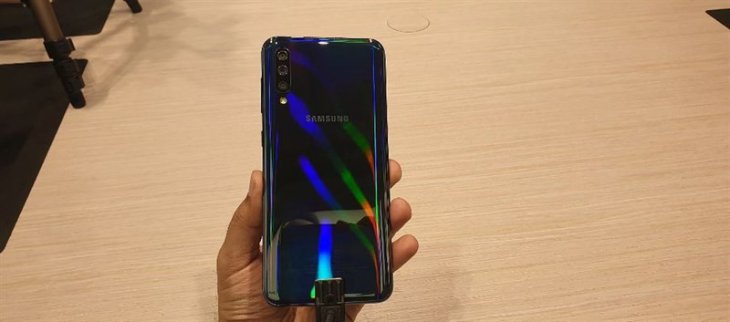
For the battery, the Vivo V15 Pro is backed by a decent 3,700 mAh battery while the Poco F1 and Galaxy A50 both come with a 4,000 mAh battery under the hood.
The last aspect we want to compare is their cameras. Both of the Galaxy A50 and Vivo V15 Pro sport a triple camera setup on the rear, whereas the Poco F1 only has a dual rear camera system. To be more specific, the Samsung handset’s camera setup includes a 25MP main sensor, an 8MP ultra-wide lens, and a 5MP depth sensor. The camera system on the V15 Pro comprises of a 48MP main sensor, an 8MP ultra-wide lens, and a 5MP depth sensor. On the other hand, there are a 12MP main sensor and a 5MP secondary depth sensor on the Poco F1’s rear camera setup.
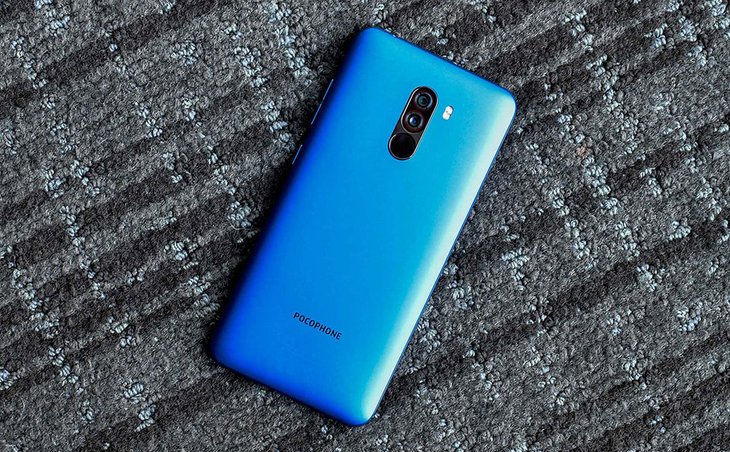
The Poco F1 is relatively behind in the camera quality compared to the other two
On the front, Xiaomi goes for a 20MP selfie camera on the Poco F1, while Samsung equips a 25MP unit on the Galaxy A50. The Vivo V15 Pro has the most interesting selfie camera setup as it has a 32MP housing in a motorized pop-up unit. It will pop up whenever users need to take a selfie or video call.
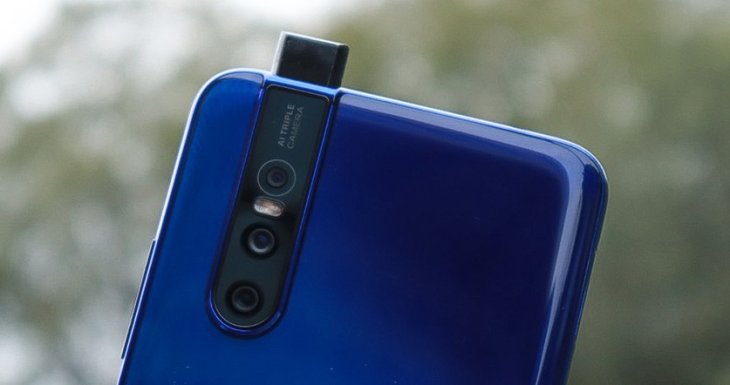
Vivo V15 Pro's pop-up selfie camera
In terms of software, all three phones run the latest Android 9 Pie with their respective custom UIs on top. While the Galaxy A50 and Vivo V15 Pro come with Android 9 Pie-based custom UIs out of the box, Poco F1’s owners can upgrade their phones from Android 8.1 to Android 9 Pie since the end of last year.
Unfortunately, despite featuring some new features, the Vivo V15 Pro still only has a micro-USB port instead of a USB type-C one like on the Galaxy A50 and Poco F1, considering the fact that the Vivo V15 Pro has just recently been released in early 2019 while the Poco F1 has been on the market since August last year. Still, it has support for Dual-Engine fast charging technology that is claimed to charge from 0 to 24 percent in just 15 minutes. The Xiaomi and Samsung also have support for fast charging tech as well.
Galaxy A50 vs. Poco F1 vs. Vivo V15 Pro: Final thoughts
To conclude, while the Poco F1 is packed with powerful hardware, Samsung and Vivo equip their handsets with some cool features like the in-display fingerprint scanner and the pop-up selfie camera. Therefore, it will come down to your preference: powerful hardware or feature-packed phone?
>>> Vivo V15 vs. POCO F1 vs. Oppo F11 Pro: Price & Specifications Compared
Featured Stories

Mobile - Oct 23, 2025
How Casual Games Are Winning the Mobile Attention War

Mobile - Jul 03, 2025
OPPO Reno 14 Series Hits India: Launch Date, Cameras, and Specs

Mobile - Jun 12, 2025
Best Gaming Phones 2025: Top Devices for Mobile Gaming

Mobile - Jun 12, 2025
Vivo T4 Ultra Debuts with MediaTek Dimensity 9300+ Chipset

Mobile - Jun 08, 2025
Realme GT 7T Review: Power Meets Endurance in Controversial Style

Mobile - Jun 08, 2025
Motorola Edge 60 Set to Debut in India This June

Mobile - Jun 07, 2025
Realme C73 5G Launches in India: Budget 5G Phone Starts at ₹10,499

Gadgets - Jun 07, 2025
OnePlus 13s Makes Indian Debut: Compact Flagship Brings Premium Features at...

Mobile - Jun 04, 2025
Samsung Galaxy Z Fold 7 Ultra: The Next Chapter of Premium Foldables

Mobile - Jun 02, 2025
Comments
Sort by Newest | Popular